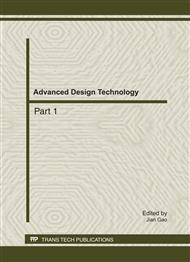p.1444
p.1448
p.1454
p.1459
p.1465
p.1471
p.1477
p.1483
p.1492
Finite Element Simulation of High-Speed Hard Turning
Abstract:
The results reported in this paper pertain to the simulation of high speed hard turning when using the finite element method. In recent years high speed hard turning has emerged as a very advantageous machining process for cutting hardened steels. Among the advantages of this modern turning operation are final product quality, reduced machining time, lower cost and environmentally friendly characteristics. For the finite element modelling a commercial programme, namely the Third Wave Systems AdvantEdge, was used. This programme is specially designed for simulating cutting operations, offering to the user many designing and analysis tools. In the present analysis orthogonal cutting models are proposed, taking several processing parameters into account; the models are validated with experimental results from the relevant literature and discussed. Additionally, oblique cutting models of high speed hard turning are constructed and discussed. From the reported results useful conclusions may be drawn and it can be stated that the proposed models can be used for industrial application.
Info:
Periodical:
Pages:
1465-1470
Citation:
Online since:
August 2011
Authors:
Price:
Сopyright:
© 2011 Trans Tech Publications Ltd. All Rights Reserved
Share:
Citation:


